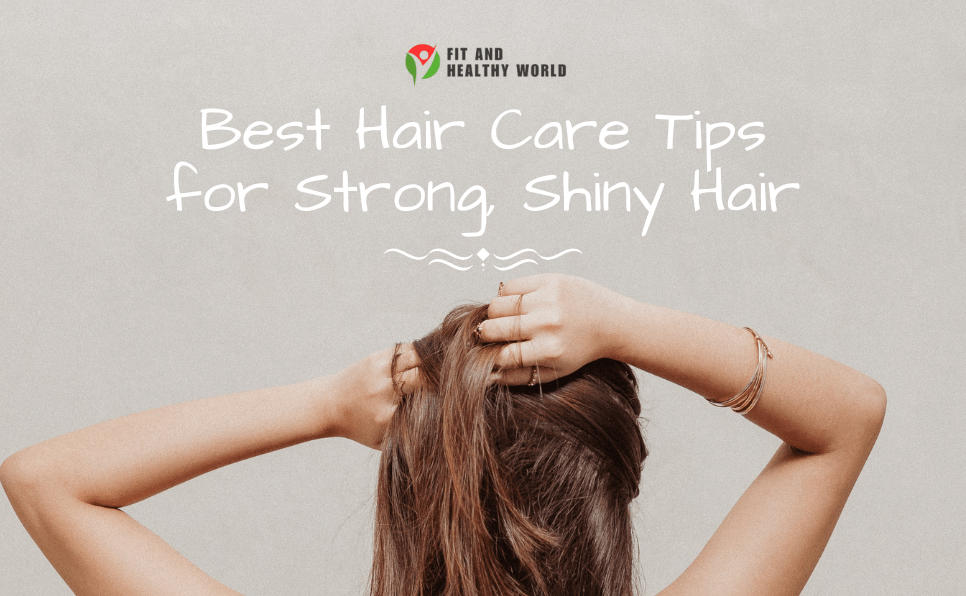More than 50 million men and 30 million women in the United States suffer from hair loss. Two-thirds of men will have significant hair loss by age 35, and 40% of women will exhibit clinical hair loss by age 40. It’s no wonder that learning how to prevent hair loss has emerged as a critical health priority for millions of people worldwide, as reflected in these alarming statistics.
- The science behind hair growth cycles
- Root causes of different hair loss types
- Medical treatments with clinical proof
- Natural remedies backed by research
- Essential lifestyle changes
- Professional treatment options
- Answers to frequently asked questions
We’ve compiled the latest dermatological research from institutions like the Cleveland Clinic and the American Academy of Dermatology to create this definitive resource on stopping hair fall naturally and medically.
The Science of Hair Growth: Understanding Your Follicles
The Hair Growth Cycle Explained in Detail
Your scalp contains about 100,000 hair follicles that follow a precise growth schedule:
- Anagen Phase (Growth Stage)
- Lasts 2-7 years
- Hair grows about 1 cm per month
- 85-90% of your hair is in this phase
- Catagen Phase (Transition Stage)
- Lasts 2-3 weeks
- Hair stops growing and detaches from blood supply
- Affects 1% of hair at any time
- Telogen Phase (Resting Stage)
- Lasts 3 months
- Old hair falls out (50-100 strands daily is normal)
- 10-15% of hair is in this phase
When this cycle gets disrupted, you experience excessive shedding or thinning. Understanding your specific disruption point is key to effective treatment.
Comprehensive Guide to Hair Loss Causes
Genetic Factors (Androgenetic Alopecia)
- Accounts for 95% of male hair loss cases
- Caused by sensitivity to DHT (dihydrotestosterone)
- Creates receding hairline and crown thinning
- Affects 30-50% of men by age 50
Medical Conditions
- Thyroid disorders (both hypo and hyperthyroidism)
- Autoimmune diseases (alopecia areata, lupus)
- Scalp infections (ringworm, folliculitis)
- Chronic illnesses (diabetes, lupus)
Hormonal Changes
- Pregnancy and postpartum (telogen effluvium)
- Menopause (estrogen decline)
- PCOS (excess androgens)
- Birth control adjustments
Nutritional Deficiencies
- Iron deficiency (most common in women)
- Low protein intake
- Vitamin D deficiency
- Zinc deficiency
Lifestyle Factors
- Chronic stress (elevates cortisol)
- Smoking (reduces follicle oxygenation)
- Harsh hair treatments (bleaching, heat styling)
- Tight hairstyles (traction alopecia)
Diagnosing Your Hair Loss: When to See a Doctor
Warning Signs Requiring Professional Evaluation
- Sudden patchy hair loss
- Itching, burning or pain on scalp
- Hair loss accompanied by fatigue
- Noticeable thinning in under 6 months
- Bald spots larger than a quarter
Diagnostic Tests Dermatologists Use
- Pull Test: Gently tugs on hair to assess shedding
- Scalp Biopsy: Removes small skin sample for analysis
- Blood Tests: Checks for:
- Thyroid levels (TSH, T3, T4)
- Iron stores (ferritin)
- Vitamin D levels
- Hormone panels (testosterone, DHEA)
- Microscopic Examination: Evaluates hair shaft structure
Medical Treatments with Clinical Proof
FDA-Approved Topical Treatment: Minoxidil
- How it works: Vasodilator that extends growth phase
- Effectiveness: 60% see reduced shedding in 8 weeks
- Usage: Apply 1ml twice daily to dry scalp
- Side effects: Mild itching or flaking (5% of users)
- Cost:
- 15−
- 15−30 monthly
Oral Medication: Finasteride (Propecia)
- Mechanism: Blocks 5-alpha reductase (DHT production)
- Success rate: 90% stop further loss, 65% regrow hair
- Dosage: 1mg daily
- Safety: Not for women of childbearing age
- Price:
- 70−
- 70−100 monthly
- Source: Medical News Today
Advanced Clinical Procedures
- Platelet-Rich Plasma (PRP) Therapy
- Process: Blood drawn, centrifuged, injected into scalp
- Sessions: 3-4 initial treatments, then maintenance
- Results: 70% see noticeable thickening
- Cost:
- 500−
- 500−2,500 per session
- Low-Level Laser Therapy (LLLT)
- Devices: Laser caps or combs (FDA-cleared)
- Protocol: 30 minutes 3x weekly
- Effectiveness: Increases density by 35% in 6 months
- Investment:
- 200−
- 200−3,000 for devices
Natural Remedies Backed by Science
Nutritional Approaches
- Iron Supplementation
- Dose: 18mg daily for women, 8mg for men
- Food sources: Spinach, lentils, red meat
- Note: Get ferritin levels above 70 ng/mL for hair growth
- Collagen Protein
- Benefits: Provides amino acids for keratin production
- Dosage: 10-20g daily
- Forms: Powder, capsules, bone broth
Topical Natural Treatments
- Rosemary Oil: Comparable to minoxidil in clinical trials
- Peppermint Oil: Increases follicle depth by 30%
- Aloe Vera: Reduces scalp inflammation and DHT
Lifestyle Modifications
- Stress Reduction Techniques
- Meditation (25 minutes daily)
- Yoga (3x weekly)
- Adequate sleep (7-9 hours nightly)
- Gentle Hair Care Routine
- Use wide-tooth combs
- Limit heat styling to 2x weekly
- Sleep on silk pillowcases
Prevention Strategies by Hair Loss Type
For Genetic Hair Loss
- Start treatment early (age 25-35)
- Combine minoxidil + finasteride
- Consider DHT-blocking shampoos
For Stress-Related Shedding
- Identify and remove stressors
- Take adaptogenic herbs (ashwagandha)
- Ensure adequate protein intake
For Female Pattern Thinning
- Address hormonal imbalances
- Use 2% minoxidil formulation
- Try scalp microneedling (0.5mm weekly)
Conclusion: Your Personalized Hair Loss Prevention Plan
Stopping hair loss requires a multi-pronged approach tailored to your specific cause. The most effective strategy combines:
- Medical treatments (minoxidil, finasteride)
- Nutritional support (iron, protein, vitamins)
- Gentle hair care (avoid damage)
- Stress management (lower cortisol)
Remember: Consistency is key. Most treatments require 3-6 months before visible improvement. Document your progress with monthly photos and stay patient. For stubborn cases, consult a board-certified dermatologist who specializes in hair disorders.
Ready to take action? Start today with one medical treatment and one lifestyle change. Your future self will thank you for the thicker, healthier hair you’ll enjoy for years to come.
FAQs: Expert Answers to Common Concerns
Can hair grow back after thinning?
Yes, if follicles remain active. Minoxidil can revive dormant follicles within 6-12 months of consistent use.
What’s the most effective natural remedy?
Clinical studies show that rosemary oil works nearly as well as minoxidil with fewer side effects when used properly.
How long before I see results?
Medical treatments show initial results in 3-4 months. Natural approaches may take 6-12 months.
Are hair transplants worth it?
For advanced genetic hair loss, transplants provide permanent results when performed by skilled surgeons.
How do I prevent hair loss?
Eat well, stay away from industrial chemicals, and try to keep a calm mind.
What can I do to stop hair loss?
Here are the tips shared in this article: diet, stress management and treatments.
What causes it and what can prevent it?
These include genetics, hormones, and lifestyle. Prevention includes dietary measures, stress reduction, and treatments.



